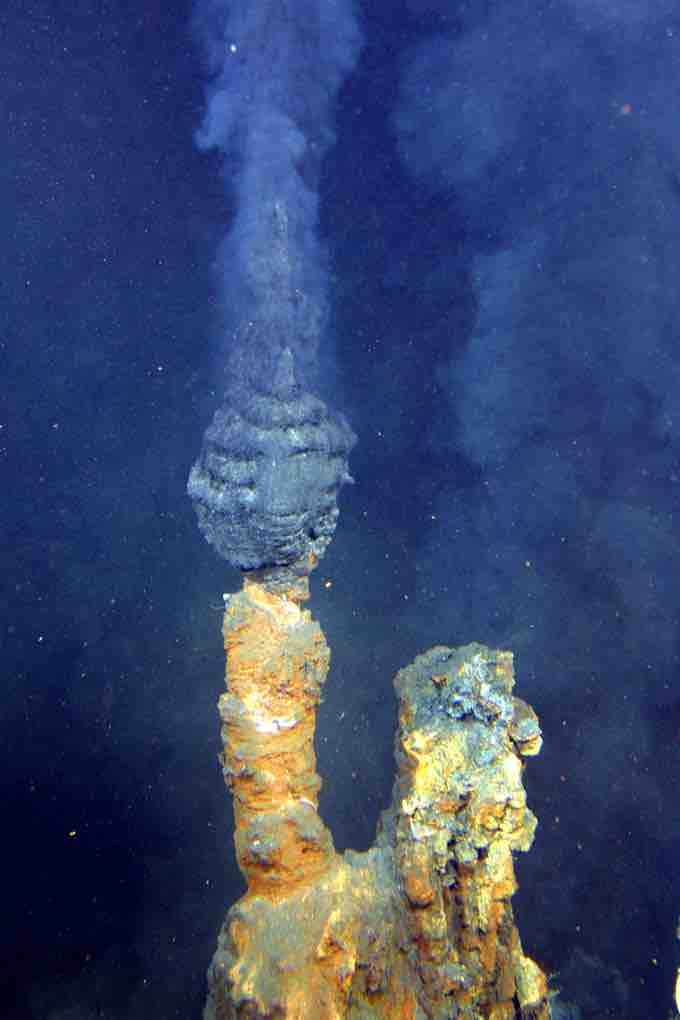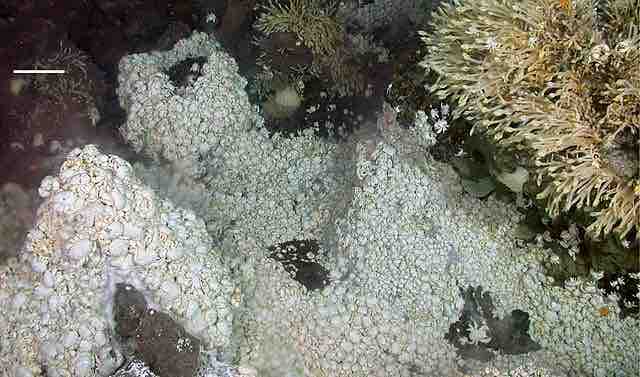Hydrothermal Vents and Their Microbial Communities
A hydrothermal vent is a fissure in the earth's surface from which geothermally heated water issues. They are typically found deep below the surface of the ocean. Hydrothermal vents are of interest to microbiologists because they have unique microbial communities found nowhere else on earth .

Hydrothermal Vents
Hydrothermal vents are cracks in the earth's crust where geothermally heated water leaks out.
In most shallow water and terrestrial ecosystems, energy comes from sunlight, but in the deep ocean there is total darkness. However, hydrothermal vents often expel nutrient rich water, containing methane and sulfur compounds. Vent bacteria can synthesize all the compounds they need to live from these nutrients, a process called chemosynthesis. These bacteria form the basis of the entire hydrothermal vent ecosystem.
The chemosynthetic bacteria grow into a thick mat, covering the hydrothermal vent, and this is the first trophic level of the ecosystem. Snails, shrimp crabs, tube worms, and fish feed on the bacterial mat and attract larger organisms such as squid and octopuses. Many of these species are specially adapted to live in the dark and lack eyes. Hydrothermal vents are biodiversity hot spots because they have many species that are uniquely adapted to live in this harsh environment . For example, the Pompeii tube worm Alvinella pompejana can resist temperatures up to 176°F. These ecosystems are almost entirely independent of sunlight (although the dissolved oxygen used by some animals does ultimately come from plants at the surface ).

Tubeworms Living Near A Hydrothermal Vent
Some species of tube worms are specially adapted to withstand the high temperatures found at hydrothermal vents.

Crabs near a hydrothermal vent
The ecosystems around hydrothermal vents rely on mats chemosynthetic bacteria, and many species feed on the bacteria. Hydrothermal vents are some of the most unique ecosystems in the world
Despite being some of the most remote ecosystems in the world, hydrothermal vents are under threat from mining companies. As mineral resources on land have become depleted, mining companies have turned to deep sea geothermal vents to extract metals and sulfur. Although the technology for deep sea mining is new, conservation biologists are concerned that mining hydrothermal vents will destroy these fragile and unique ecosystems.